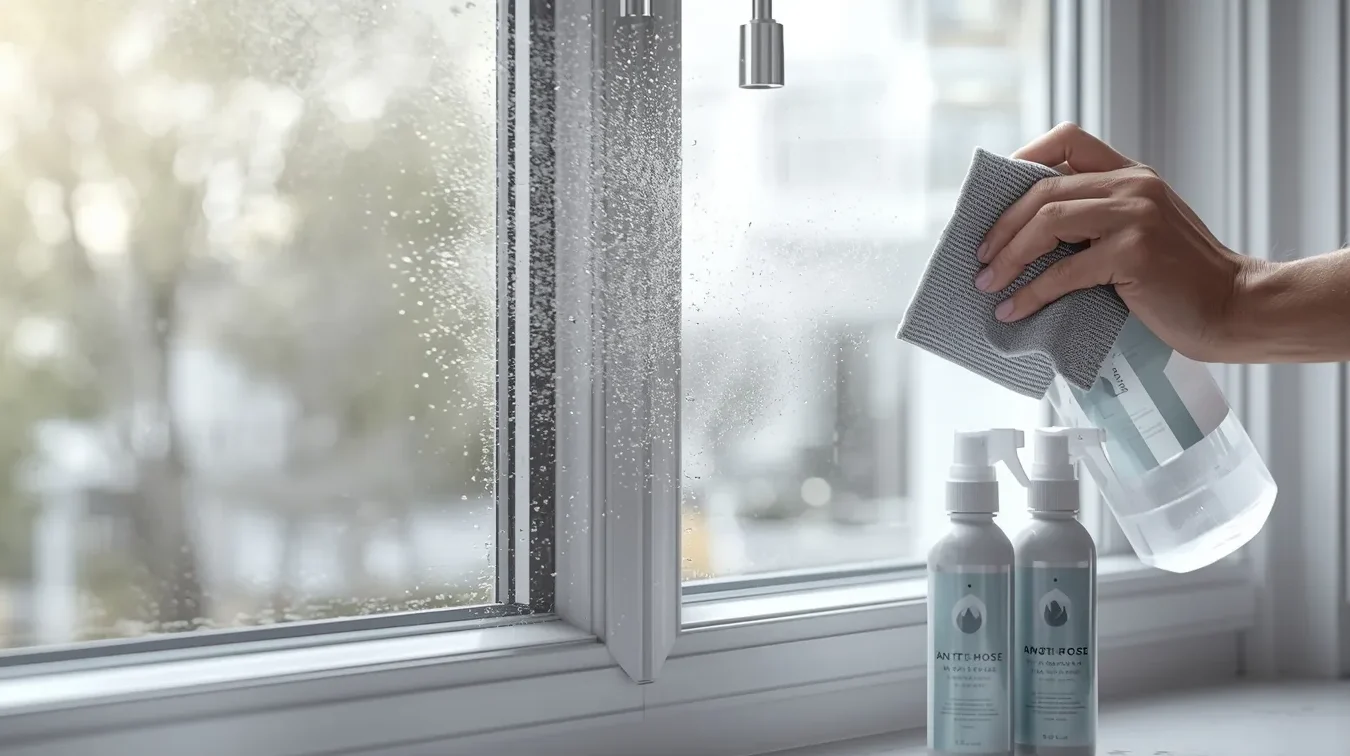Many homeowners wake up to find their windows covered with fog or moisture. It can make the glass look cloudy, affect visibility, and even raise concerns about mold or damage. If you’ve ever wondered, “why are my windows fogging up?”, the short answer is this fog forms when warm, moist air meets a cooler surface like glass, creating condensation. This article explains the real reasons behind foggy windows, what it means for your home, and how to prevent it using simple, effective steps trusted by experts at Texas Windows.
Understanding Why Windows Fog Up in the First Place
When you see fog on your windows, it’s not dirt or dust it’s water vapor turning into tiny droplets. This happens when the air inside or outside your home holds moisture and comes into contact with the colder window glass. The temperature difference forces the moisture to condense, and that’s what creates the cloudy or foggy look.
This reaction is similar to what happens when you take a cold drink outside on a hot day and water droplets appear on the glass. In homes, though, it’s more than just a small inconvenience. Fogging can mean your home has too much humidity or poor ventilation. Understanding this is the first step to solving the problem permanently.
The Science Behind Window Fog and Condensation

Condensation is a natural part of physics. Warm air can hold more moisture than cold air. When that warm, moist air touches a cold surface, like your window glass, it can’t hold all the moisture anymore. The extra water vapor turns into liquid droplets that stick to the glass surface.
If this keeps happening, it can create foggy or wet windows, especially during winter or rainy days. Indoor activities like cooking, showering, and even breathing add moisture to the air. Without proper ventilation, this moisture has nowhere to go, which is why home windows fogging up is a common issue.
This scientific process shows that fogging isn’t random it’s a direct result of temperature, humidity, and air movement inside your home.
What Causes Windows to Fog Inside a House
When windows fog up on the inside, it’s a sign of high humidity indoors. Everyday habits such as boiling water, drying clothes inside, or long hot showers increase moisture levels. If your home doesn’t have good air circulation, that humidity stays trapped.
Another reason is poor insulation. Older homes or windows with damaged seals allow cold air to meet warm air easily. When this happens, moisture on the inside of house windows builds up faster, especially in corners and edges. Over time, constant condensation can lead to mold growth, peeling paint, and wood frame damage.
To fix this, you must find out where the moisture is coming from and how to balance indoor humidity. Dehumidifiers, exhaust fans, or simply opening a window for a few minutes can make a big difference.
Common Reasons Why Your House Windows Are Fogging Up
There are several reasons your house windows are fogging up. Let’s go through the most common ones:
- High indoor humidity: Cooking, bathing, and even plants release moisture into the air.
- Poor ventilation: When air doesn’t circulate properly, moisture collects near windows.
- Broken window seals: In double-pane windows, a damaged seal allows moisture to get trapped between the panes.
- Temperature differences: In winter, heated indoor air meets cold glass surfaces, creating condensation.
- Lack of insulation: Thin or old windows cool down faster, encouraging fogging.
By recognizing these triggers, you can take early steps to prevent long-term issues. Understanding what causes windows to fog helps homeowners control their environment more effectively.
When Windows Fog Up Outside: What It Really Means
Seeing fog on the outside of your windows might seem strange, but it’s usually a good sign. It means your windows are doing their job keeping the inside temperature stable. Condensation outside of windows happens when the glass surface is cooler than the dew point of the air outside.
This is common in the early morning when the air is humid, and the outside temperature drops. It often clears on its own once the sun warms the glass. Unlike interior fogging, exterior condensation does not harm your home or indicate damage.
However, if you notice excessive fogging even during warm afternoons, it might suggest poor window coating or outdated glass technology. Energy-efficient windows can help regulate surface temperature and minimize visible moisture.
Why Are My Windows Fogging Up Between the Glass Panes
If fog appears between two layers of glass, it’s a different issue altogether. This type of fog indicates a seal failure. Modern windows often have two or three panes sealed together with insulating gas in between. When the seal breaks, moisture sneaks inside, leading to a foggy, milky appearance that you cannot wipe off.
Over time, this trapped moisture can cause windows icing up inside the house during cold seasons. Sadly, cleaning the glass won’t help because the moisture is sealed inside. The only long-term solution is to replace the affected window unit or glass pane.
This problem is common in older windows where seals naturally wear out over time. Replacing them with quality insulated units from trusted experts like Texas Windows ensures better clarity and long-lasting protection.
How to Stop Windows From Fogging Up in Your Home

The good news is that window fogging can be controlled. Here are practical steps you can take:
- Improve airflow. Open windows when cooking or showering to let moist air escape.
- Use a dehumidifier. It removes extra moisture from indoor air.
- Check ventilation fans. Ensure bathroom and kitchen fans are working properly.
- Seal leaks and gaps. Stop warm air from meeting cold surfaces near windows.
- Keep window surfaces warm. Curtains, blinds, or storm windows help reduce condensation.
If you’ve been searching for how to stop windows from fogging up, start by controlling humidity levels. The less moisture in the air, the clearer your windows will remain year-round.
Easy Ways to Reduce Moisture and Stop Condensation on Windows
Reducing moisture inside your home doesn’t require fancy tools. Small daily habits go a long way. Dry your clothes outside when possible, use lids while cooking, and keep interior doors open to improve circulation.
If you have moisture on the inside of house windows frequently, place a small moisture absorber near problem areas. You can even make a DIY one using rock salt in a breathable container.
Regularly wiping window sills and frames helps prevent mold buildup. Insulating your attic and sealing ducts also prevent warm, humid air from rising and collecting near windows. Each of these steps supports how to stop moisture on windows effectively and naturally.
Preventing Foggy House Windows in Every Season
Different seasons bring different moisture challenges. During winter, condensation forms because the indoor air is warm while outdoor temperatures are freezing. Using weather stripping and keeping blinds slightly open allows airflow to prevent foggy house windows.
In summer, humidity levels rise, so ventilation becomes crucial. Turning on ceiling fans, running air conditioning, and keeping windows slightly open can help balance moisture.
If you live in a region with high humidity, you might notice windows fogging up in the house more often. The trick is to stay consistent with dehumidifying habits, especially in bathrooms and kitchens where moisture builds fastest.
Maintaining balanced humidity between 30% and 50% ensures comfort and protects window health all year.
Anti-Fog Solutions and Products That Really Work

Sometimes, even after following all the steps, you may still experience mild fogging. That’s where anti-fog for house windows products can help. These sprays and coatings form a thin layer on the glass that resists moisture buildup.
You can find them at most hardware stores, and they’re easy to apply just clean the surface and spray evenly. For a natural approach, mix vinegar and water as a gentle cleaning solution. It reduces residue and helps keep glass clearer longer.
If you prefer a one-time investment, professional coatings can be applied to glass during window installation. These coatings use nanotechnology to repel moisture effectively.
Just remember, no product will replace good ventilation and humidity control. Combine both strategies for lasting clarity and comfort.
Clear Views, Comfortable Homes: Trusted Advice from Texas Windows in Lewisville, TX
A foggy window might look harmless at first, but it’s your home’s way of telling you something about the air and insulation. By understanding why your windows fog up, you can keep your home comfortable and energy efficient.
Taking small actions like improving ventilation, reducing humidity, and sealing leaks can prevent most issues. For double-pane or aged windows, professional inspection ensures your seals are intact and your insulation is working properly.
At Texas Windows, our experience in window installation and home energy solutions helps homeowners find the right balance between comfort and efficiency. We’ve seen every type of fogging problem from minor condensation to full seal failures and know exactly how to solve them with practical, long-term results.
If your home windows fogging up is becoming a daily issue, don’t ignore it. The clearer your windows stay, the healthier your home will feel. That’s the kind of peace of mind every homeowner deserves
Reach out today for a free inspection and expert guidance from Texas Windows. We’ll help you identify the cause of your window fogging and recommend affordable, lasting solutions so your home stays bright, comfortable, and worry-free



